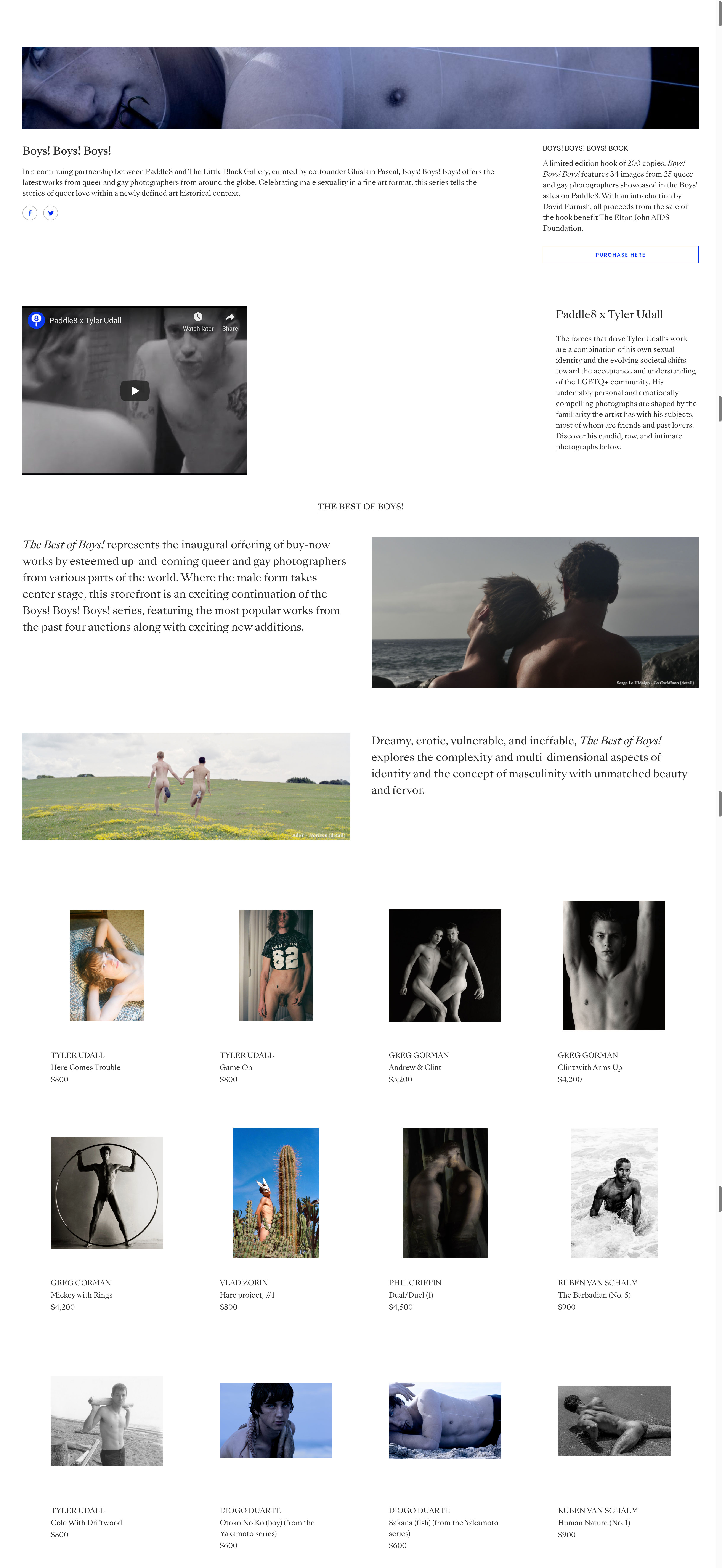Last Updated on 10/01/2020 by Chris Gampat
To follow the full scope of this article, please see the prior piece written on this gallery’s approach to online auctions.
Sometimes people throw out the modern cultural adage ‘stay in your lane,‘ with varying degrees of validity. Thanks to Black Box Gallery, this is a particularly evident case of “more than warranted” – it’s undeniable that the respect and representation of the queer/gay male community are held in much higher regard by the curators than their respect for women. In their previous auction, Girls! Girls! Girls!, Black Box showed lewd, borderline pornographic (and I don’t mean that in any anti-porn capacity: we as a culture need to embrace more sex positivity and end slut-shaming. Rather, I’m speaking to the hypersexualized nature of the curation), male-fantasy driven imagery portraying ‘women’s powerful sexuality’ through the lens of the male gaze. In this new auction which, for the purposes of this comparison piece, could not be more appropriately named, we see an exploration of the queer/gay male community via male sexuality.
The difference first becomes evident from the moment you account for which artists they chose to include in each curation. In Girls! Girls! Girls!, of the 17 artists featured, only one was a woman. In this selection of artists, the entire collection is queer/gay. To quote,
“…offers the latest works from queer and gay photographers from around the globe. Celebrating male sexuality in a fine art format, this series tells the stories of queer love within a newly defined art historical context.”
That second sentence highlights another crucial distinction in discerning these subtle, but monumental differences between these two auctions. Sexuality and love are seen as related, connected, and interconnected aspects of sexuality in Boys! Boys! Boys! But, in its female counterpart, sex and erotica took center stage; there was no verbalization of love or romance. The closest it came was with the singular female artist’s silhouette work and Audrey Hepburn’s portrait (if we want to consider iconic Hollywood figures mixed with pastels romantic). In fact, of the 67 pieces included in this show (and let’s not even get into how (of course) more artists and works were featured in this male-driven show as compared to the female one, which maxed out at 40 pieces), 16 feature at least two men, usually relating to each other in soft, sentimental fashions. Gentleness, romanticism, affection, compassion, sensitivity – all of these are represented within the broad scope of interactional imagery that sometimes is sexual, sometimes sensual, and frequently in-between.
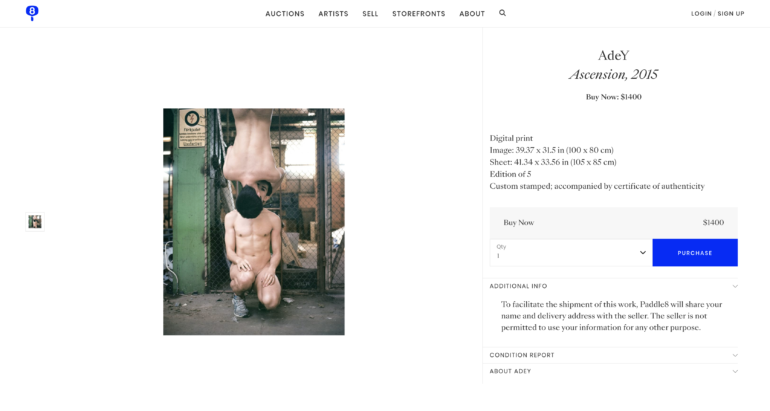
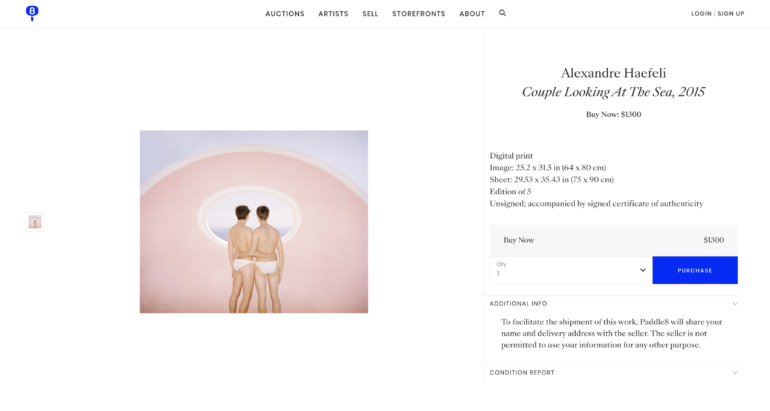
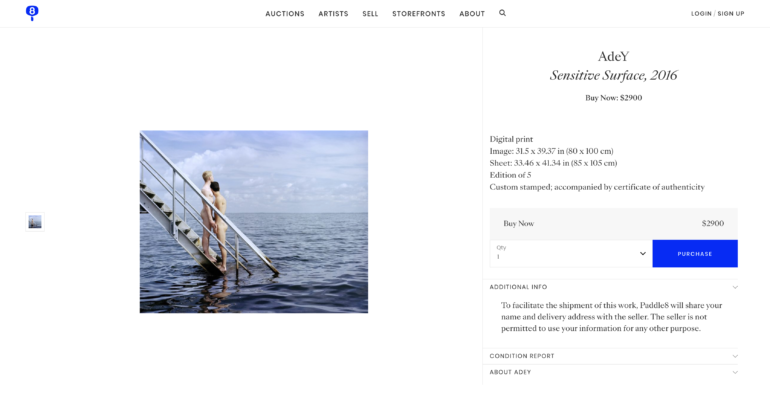
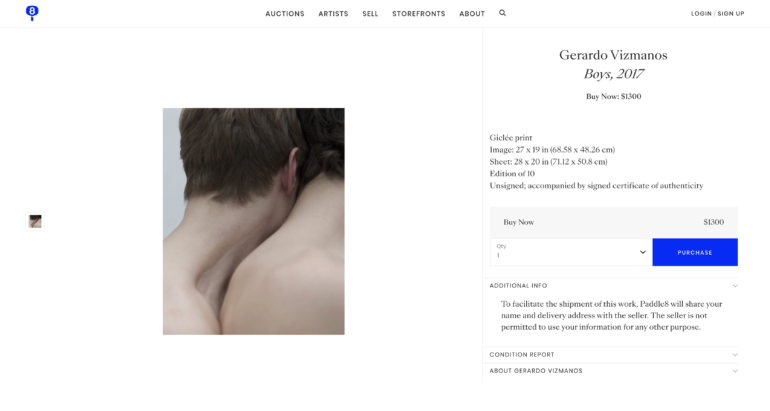
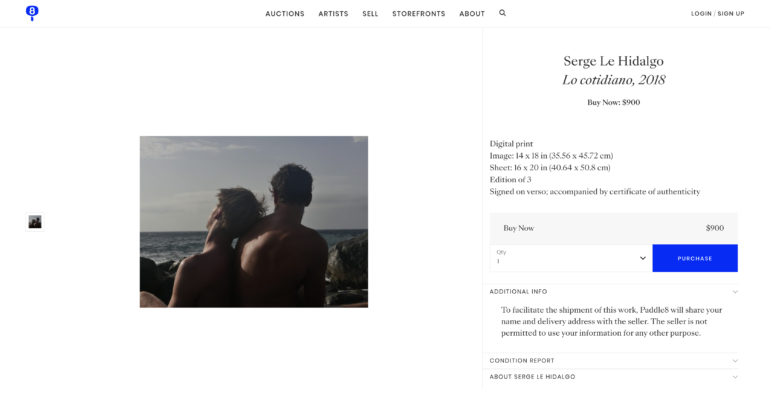
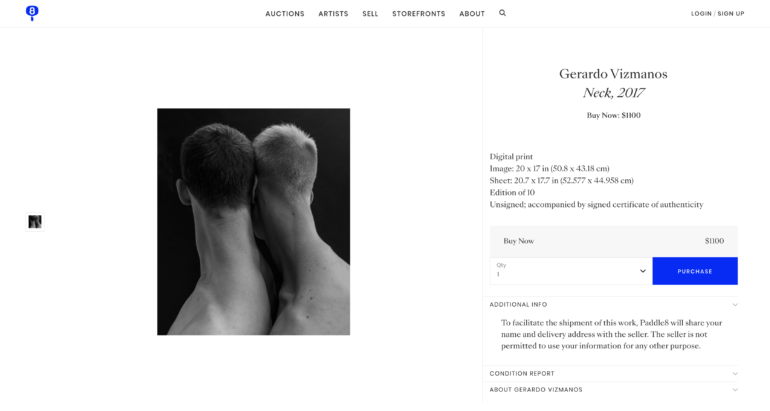
In Girls! Girls! Girls!, the women were predominantly alone (only six have a counterpart or additional people), and of the only one with a sexual dynamic between the female and male individuals, it reeks of domination, power dynamics, submission, and control. There’s a relative absence of this within Boys! Boys! Boys!, this piece being the closest comparison:
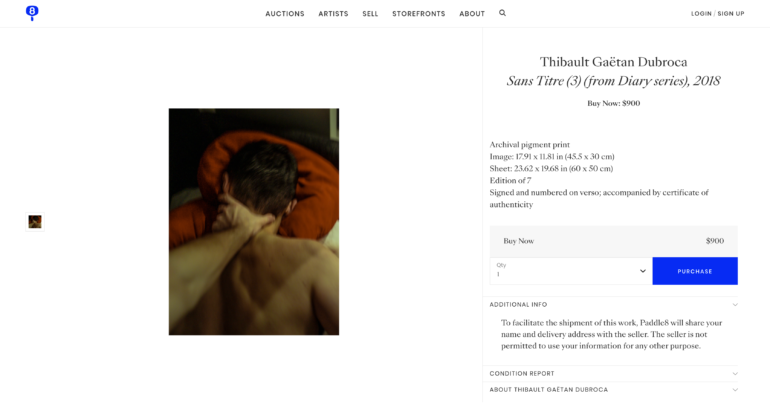
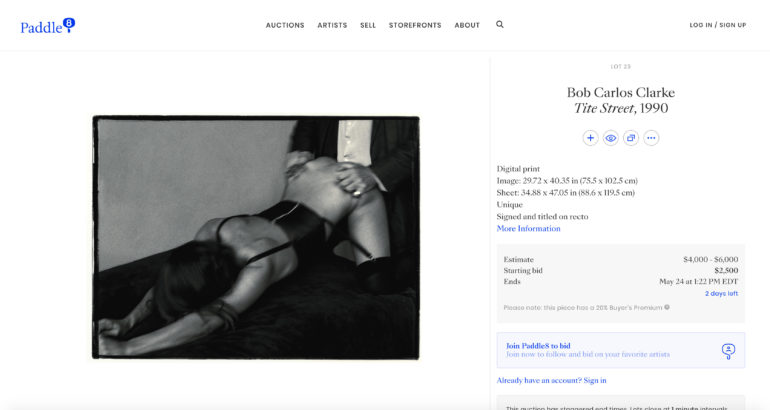
Girls! Girls! Girls! was rife with this tension, this display of power, domination, subjugation – why is it that male on male sexual pleasure is seen as amicable, friendly, fun, playful, soft, tender, sweet, and affectionate, while female to male is treated with blatant violence? His hands aren’t gentle, his fingers are clearly digging in, and he’s fully clothed while she’s already half-naked. The overlap occurs in the lack of identity: they are equally denied their faces. As a straight woman, I can’t speak more to how much Dubroca’s work addresses typical male sexual engagement, so I will end my drawing of comparisons between the two pieces there.
Even just the landing page clearly discerns the difference from the moment you click the link to these auctions (Boys! | Girls!). Boys! Boys! Boys! opens with a similarly styled image, but the consistencies end there. Before getting to any nudity, or anything remotely objectifying, they feature a video with insights into one of the artists – this curation is as much about the creators as it is about the subjects. I would presume this is a direct correlation between sharing the same representative community; that the photographers are one and the same as their subjects, sharing the same cultural identities. Girls! Girls! Girls! feels inherently sexist, objectifying, dehumanizing because it’s from an external perspective, a voyeuristic peek from the outside looking in. It’s trying to comment on an experience and identity men cannot hope to understand, just as straight folks will never be truly capable of fully sharing the experience of LGBTQIA identifying individuals, or white people never really understanding what it’s like to be black. This curation feels so much more honest, with integrity, of purpose and power because it is – it’s providing a full picture, a wide scope of representation that it lacked in its previous online endeavor.
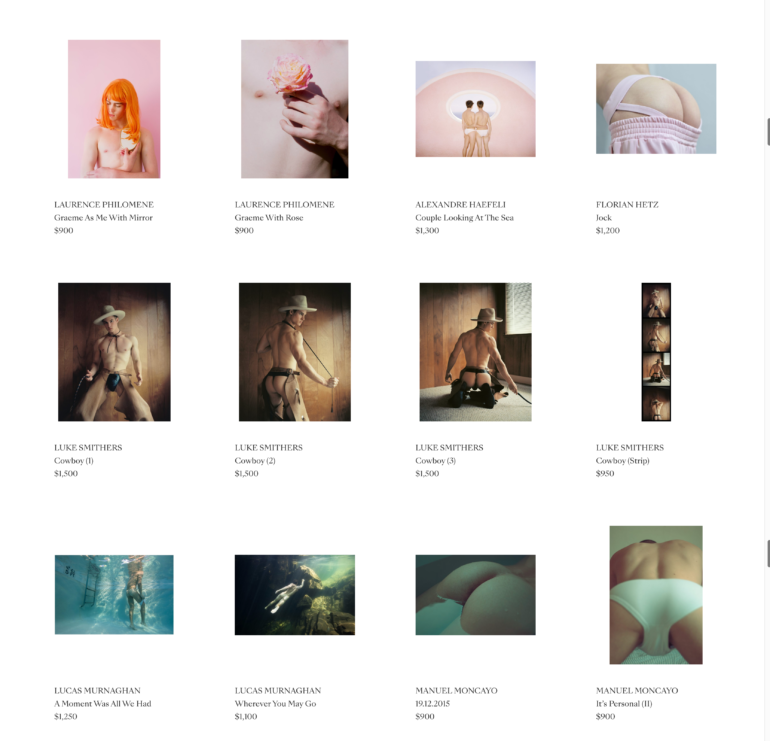
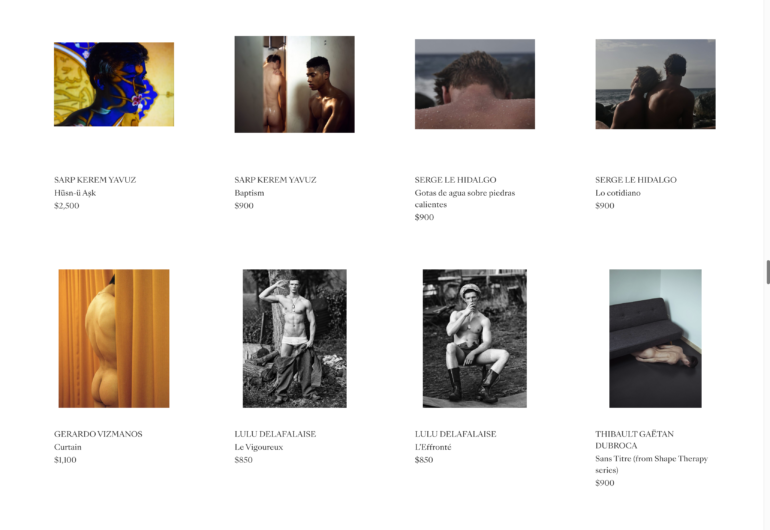
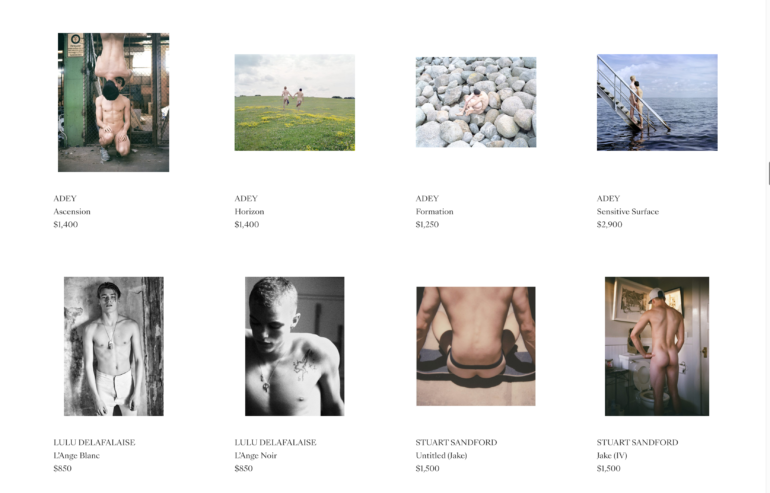
In Girls! Girls! Girls!, the subjects were anything but; they were sexualized objects in nearly every capacity, wet dream fantasies laid out on display for male visual consumption. Boys! Boys! Boys!, recognizes the subjects as people, humans, individual souls with a desire for connection and companionship, not only just nude, headless bodies or fully clothed celebrity portraits. Boys! Boys! Boys! certainly never stoops so low as to turn its subjects into faceless human furniture the way its female counterpart auction so unforgivably did.
In Girls! Girls! Girls!, there was an apparent dichotomy; virgins and whores. The age-old, classically sexist tropes that promiscuous women are inherently villainous, while those chaste and pure are the ‘good girls’. Look at the perfectly prim and proper, sensibly buttoned-up Audrey Hepburn juxtaposed next to what can be deemed laughably Kate Moss’s “portrait” – it falls into such a stereotypical comparison, leaving no room for the millions of real women who live all along the very broad sexual spectrum that the rest of society seems to forget women can exist within. We are not just angels or devils, sluts or prudes, and neither one allows or accepts that preference. Women are shamed whether they reject or embrace their sexuality wholeheartedly, and it leaves all of us less self-expressed or in touch with ourselves. On the other hand, Boys! Boys! Boys! provides a real look into the LGBTQIA community, the spectrum of gender identity and how that plays into sexuality; strength and vulnerability embraced, seeing both exist within the male identity; playing with the machismo (cowboys and the American West) and mixing it with its counter-culture counterpart (a gay man).
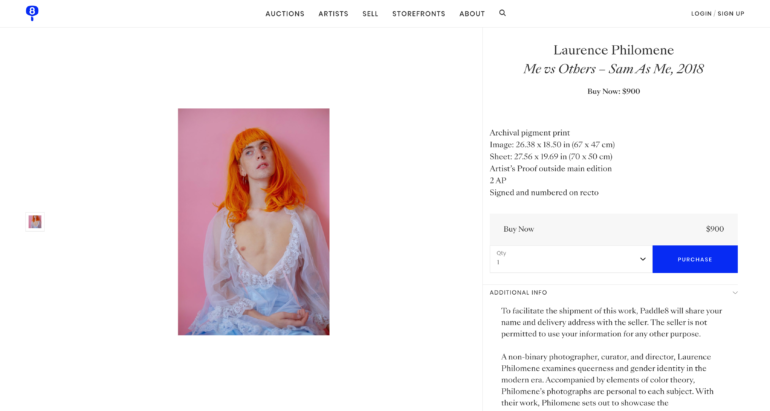
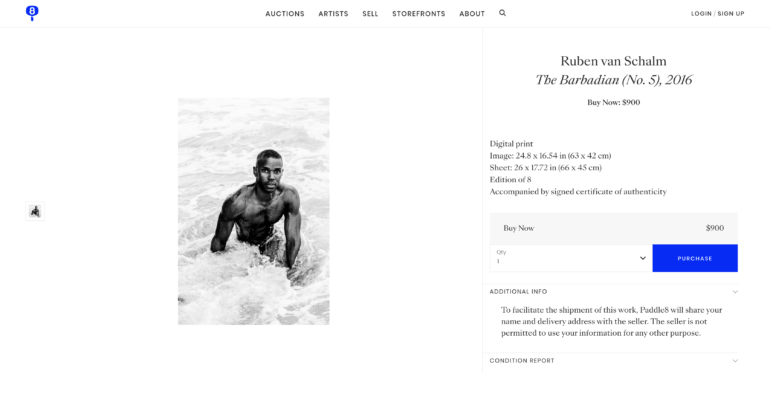
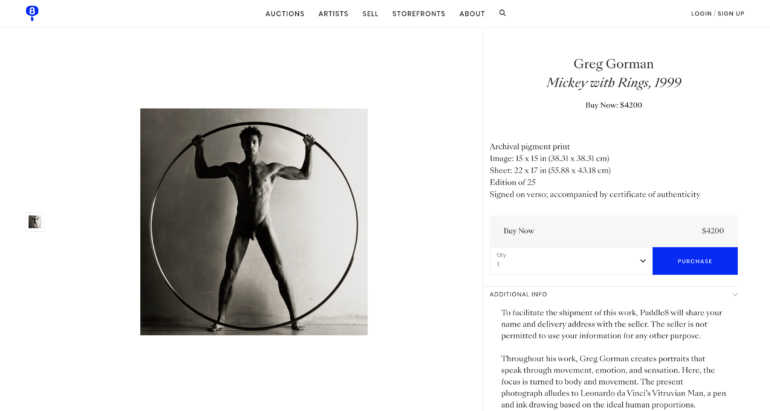
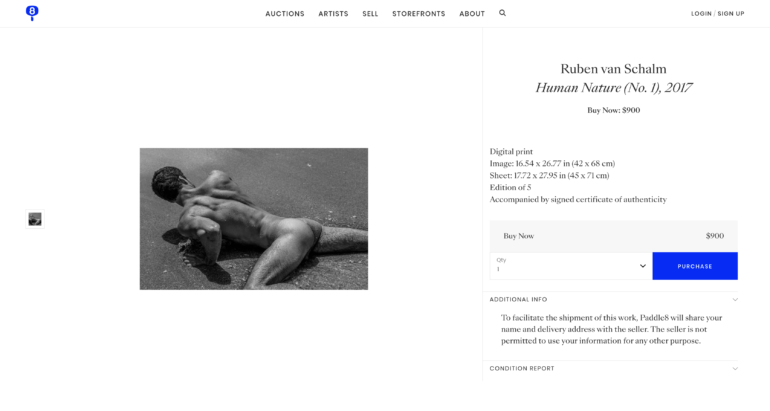
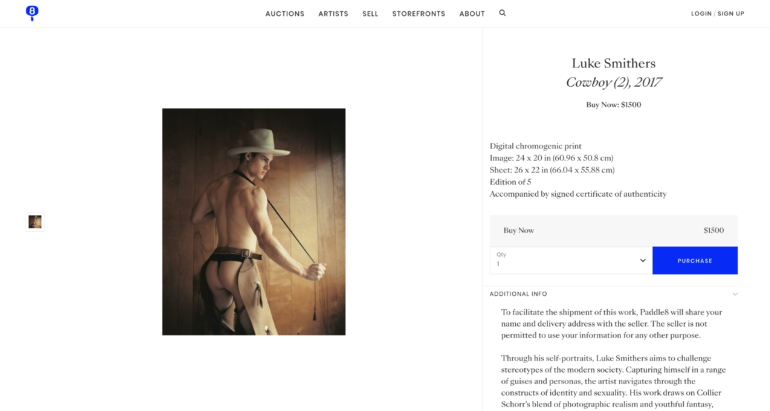
Boys! Boys! Boys! paints a real, reflective picture of the modern gay community; fun, flirty, playful, masculine, strong, diverse, beautiful, genuinely owning and embracing their sexuality. Girls! Girls! Girls! is the photographic equivalent of straight male maturation material, the visual equivalent of the single leftover sock desperately needing to be laundered.
This is the difference it makes when someone from within a community comments on the culture, versus someone on the outside looking in who thinks they’ve got a clear picture (and I write that fully aware that I am a straight white woman commenting on an LGBTQIA artist/subject gallery, so call me on my shit if I’ve missed the mark anywhere). That aside, I think this side-by-side comparison clearly highlights the need for the people in front of the lens to also be representative of the same community behind the camera.


